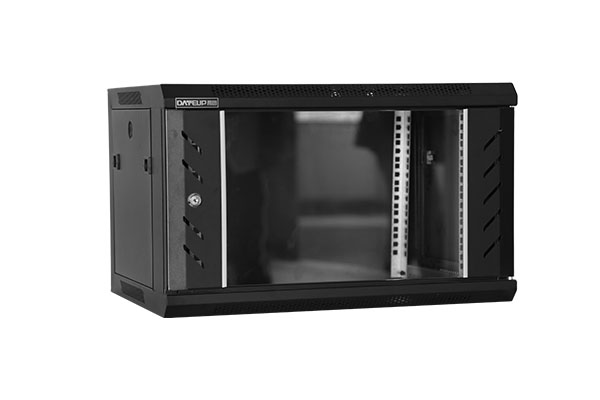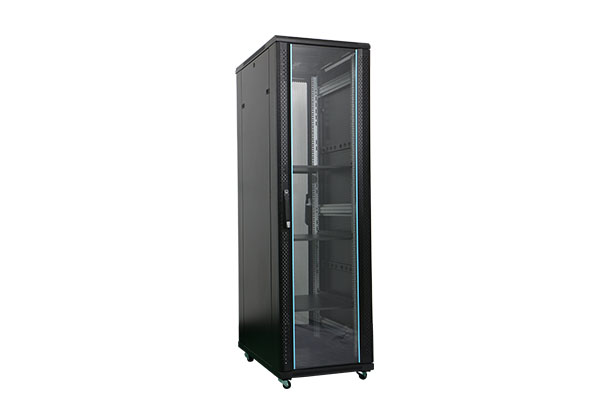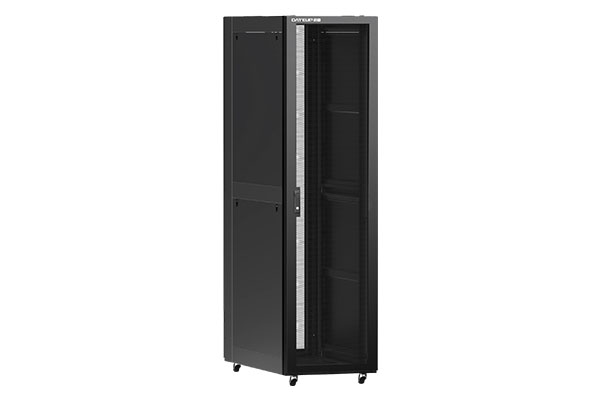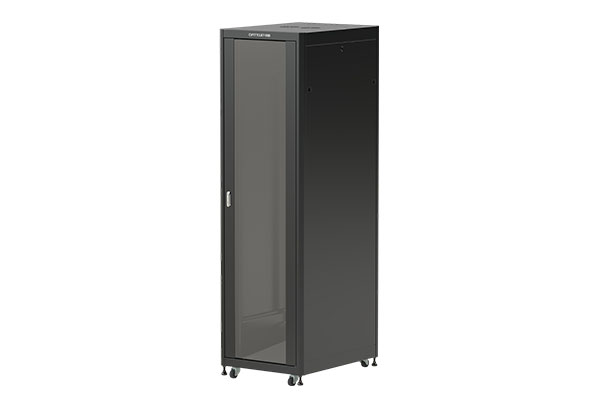How does the cooling system of the mk cabinet ensure the stability of the internal electronic equipment during long-term operation?
Release Time : 2025-07-14
The cooling system of the mk cabinet provides a stable temperature environment for the long-term operation of the internal electronic equipment through scientific design and efficient operation, becoming a key link to ensure the performance of the equipment. Electronic equipment will inevitably generate heat during operation, especially high-power equipment such as servers and switches. If the heat cannot be dissipated in time after long-term operation, the internal temperature of the mk cabinet will continue to rise. Excessive temperature will affect the performance of electronic components, such as the computing speed of the chip will decrease, the life of components such as capacitors will be shortened, and in severe cases, it will even cause equipment downtime. The core function of the cooling system is to discharge this heat from the mk cabinet in time through active or passive means to maintain the internal temperature within the range where the electronic equipment can work stably.
The cooling system usually adopts a strategy combining multiple cooling methods to ensure the efficiency of heat dissipation. The ventilation channels inside the mk cabinet are often reasonably arranged. The cold air enters from the bottom or side, absorbs heat when passing through the surface of the equipment, and then is discharged from the top or rear outlet to form a natural air convection. This convection design utilizes the physical properties of hot air rising, and can achieve basic heat dissipation without additional energy consumption. For devices with high heat generation, the system will also be equipped with fans. The position of the fans usually corresponds to the high-heat area of the equipment. The forced air supply speeds up the air flow speed and allows the cold air to take away the heat more quickly. The running state of the fan will be automatically adjusted according to the temperature inside the mk cabinet. When the temperature rises, the speed will increase to enhance the heat dissipation capacity; when the temperature drops, the speed will slow down to reduce energy consumption and reduce noise.
The precise control of the internal temperature of the mk cabinet by the cooling system is an important detail to ensure the stability of the equipment. The built-in temperature sensor in the system will monitor the temperature changes in different areas in real time and feed the data back to the control module. When the temperature of a certain area is close to the upper limit that the equipment can withstand, the control module will immediately start to enhance the heat dissipation measures, such as increasing the number of fans or increasing the speed, to reduce the temperature of the area in a targeted manner. This local temperature control capability avoids the operation of the entire mk cabinet due to the overheating of a certain device, ensuring that each device is in a suitable temperature environment. At the same time, the cooling system can also avoid uneven temperatures inside the mk cabinet, preventing some equipment from being under high temperature pressure for a long time due to being in the "hot spot" area.
The structural design of the mk cabinet cooperates with the cooling system to further improve the heat dissipation efficiency. The frames and door panels of mk cabinets are usually made of materials with good thermal conductivity, and some areas are designed with heat dissipation holes to ensure structural strength without hindering air circulation. The internal equipment mounting rack will reserve enough space to keep the devices at an appropriate distance to avoid heat accumulation caused by too dense equipment. The arrangement of cables will also take into account the heat dissipation needs. The cables are arranged in an orderly manner through the cable management rack to avoid cable entanglement and blocking the ventilation channel, ensuring that cold air can flow smoothly through the heat dissipation components of each device. The coordination of this structure and the heat dissipation system makes the heat dissipation path smoother and reduces the resistance in the heat dissipation process.
The heat dissipation system demonstrates reliable and continuous working ability in dealing with the continuous heating of the equipment when it is running at full load for a long time. Active heat dissipation components such as fans use durable motors and bearings, which can maintain stable performance during long-term operation and will not cause heat dissipation interruption due to their own failures. The power supply design of the system also takes continuity into account. Even when there is a short fluctuation in the external power supply, the backup power supply can ensure the normal operation of the heat dissipation components to avoid heat dissipation failure due to power supply problems. This continuous and stable operating state allows the heat dissipation system to keep up with the heat dissipation needs of the equipment for a long time without "not being able to do what one wants".
For devices of different types and different heat intensity inside the mk cabinet, the cooling system can achieve adaptive heat dissipation through flexible adjustment. For example, the heat generated by the server is usually greater than that of an ordinary switch, and the cooling system will configure stronger heat dissipation resources at the location of the server, such as multiple sets of fans or larger vents. When the number or type of devices in the mk cabinet changes, the cooling system can automatically identify the change in the total amount of heat and adjust the cooling strategy. When adding high-heat devices, the system will increase the overall heat dissipation power; when reducing devices or replacing them with low-heat devices, the heat dissipation intensity will be reduced, while ensuring the heat dissipation effect and avoiding energy waste. This adaptability allows the cooling system to cope with a variety of equipment configurations and always maintain the temperature balance inside the mk cabinet.
The cooling system can also reduce the impact of temperature fluctuations on the equipment. In an environment where the temperature of electronic equipment changes frequently, the components will generate stress due to thermal expansion and contraction, which may cause problems such as loose solder joints and poor interface contact in the long run. The cooling system keeps the internal temperature of the mk cabinet relatively constant through stable heat dissipation capabilities to avoid large fluctuations. Even if the external ambient temperature changes, such as the temperature in the computer room rises in summer, the cooling system can offset the external influence by enhancing heat dissipation, ensuring that the internal equipment is in a stable temperature environment and reducing the damage to the physical structure and electrical performance of the equipment caused by temperature changes.
In addition, the dust-proof design of the cooling system also indirectly guarantees the long-term stable operation of the equipment. If dust in the air enters the interior of the equipment, it will adhere to the heat sink and affect the heat dissipation efficiency, and may also cause a short circuit in the circuit. The cooling system usually installs a filter at the air inlet to filter dust and impurities in the air to ensure that the cold air entering the mk cabinet is clean. At the same time, the replaceable design of the filter allows maintenance personnel to clean or replace it regularly to avoid clogging of the filter and affecting the air intake. This combination of dust prevention and heat dissipation not only ensures the heat dissipation effect, but also reduces the damage of dust to the equipment, providing guarantees for the long-term stable operation of the equipment from multiple dimensions.







